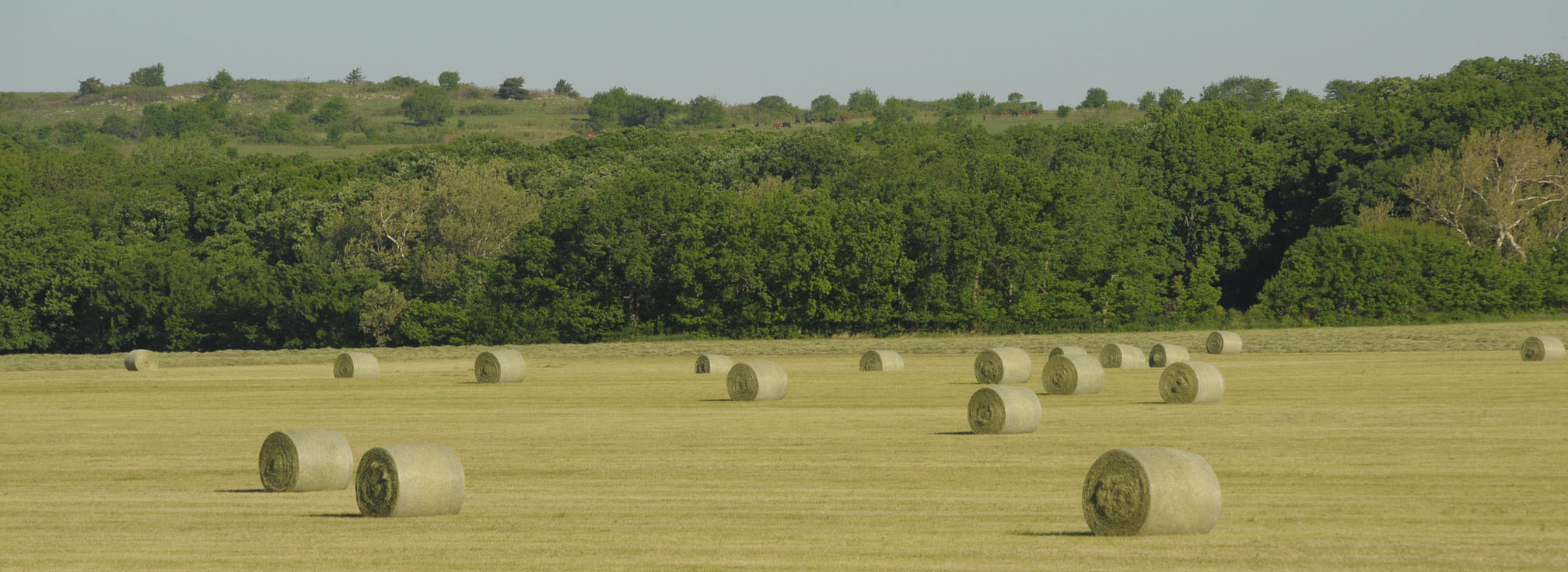
K-State beef cattle nutritionist Phillip Lancaster says forage buyers may require sellers to provide a mycotoxin analysis if concerned about mold. | Download photo
Got Hay? A guide to purchasing forage
K-State beef cattle nutritionist Phillip Lancaster shares considerations for purchasing off-the-farm forage
At a glance: Low moisture in areas of Kansas has negatively impacted the productivity of hay fields, forcing some producers to source supplemental forage elsewhere. K-State beef cattle nutritionist Phillip Lancaster explains what buyers should consider before purchasing hay.
More information: Phillip Lancaster, 785-532-6323, palancaster@vet.k-state.edu
Related: Forage Sampling Procedures and Equipment
August 5, 2024
By Jacob Klaudt, K-State Research and Extension news service
MANHATTAN, Kan. – According to the U.S Drought Monitor, approximately 20% of Kansas presently faces drought conditions, while 40% remains abnormally dry.
Many issues arise from this lack of rainfall that affects livestock producers. Kansas State University beef cattle nutritionist Phillip Lancaster said ranchers who grow their own hay encounter forage fields that yield less than normal, which leaves them needing to buy more.
“Producers are now purchasing hay from different parts of the state and country to make sure they have enough feed resources for the upcoming winter,” he said.
“People who need hay for livestock with higher nutrient requirements have started looking elsewhere to find higher quality forage than they were able to put up themselves this year.”
With remote transactions and contactless payments becoming more common, Lancaster said producers must “get eyes” on the forage before they purchase it to ensure its quality.
“There are several different aspects we can evaluate by visiting the farm and looking at hay in person,” he said. “One of the biggest things is its leaf-to-stem ratio. The highest quality hay will have more leaves with fewer stems and seed heads.”
Additionally, Lancaster urges buyers to ask sellers for a forage test to guarantee its nutritional value.
“It will tell you things like a hay’s protein percentage and fiber amount,” he said. “A forage test will also provide a relative feed value. This figure can be compared to a standard number that allows a producer to see where that hay ranks and what is considered good quality.”
He added: “You want to ask the person taking the samples for the analysis ‘What cutting did this come from?’, ‘Where in the haystack did this hay originate from?’ and ‘Was it taken using a bale core?’, so you have a good representative sample of the hay that is there.”
Beyond verification, producers should evaluate a forage’s price relative to its quality using a cost per unit of nutrient value.
“Figure out what the key nutrient you’re going to need out of the hay you’re buying and determine its cost per unit (usually measured in dollars per pound),” Lancaster said.
“In beef cows, the main nutrient of concern is energy, so look at the cost per unit of total digestible nutrients (TDN), which estimates a forage’s digestibility.”
Buyers must also establish how hay was stored prior to a transaction, according to Lancaster.
“Particularly, (buyers should think about) how it was stored since the forage sample was taken for analysis because additional moisture after that will affect the quality that you are going to actually get compared to the quality when that sample was acquired,” he said.
“Ask the seller ‘Was it covered?’ and ‘Was it raised off the ground?’ to figure out how much moisture a given bale was potentially absorbing in storage.”
Moreover, producers should consider buying hay on a tonnage basis instead of per bale.
“Livestock eat pounds; they do not eat volume. Having a total weight in tons gives a producer the ability to better calculate how much is needed and if enough is being purchased,” Lancaster said. “When bales are not wrapped to the same density, their sizes and weights can vary greatly.”
Producers may send forage samples to the K-State Department of Agronomy or local extension offices in Kansas for testing.
***

K‑State Research and Extension is a short name for the Kansas State University Agricultural Experiment Station and Cooperative Extension Service, a program designed to generate and distribute useful knowledge for the well‑being of Kansans. Supported by county, state, federal and private funds, the program has county extension offices, experiment fields, area extension offices and regional research centers statewide. Its headquarters is on the K‑State campus in Manhattan. For more information, visit www.ksre.ksu.edu. K-State Research and Extension is an equal opportunity provider and employer.